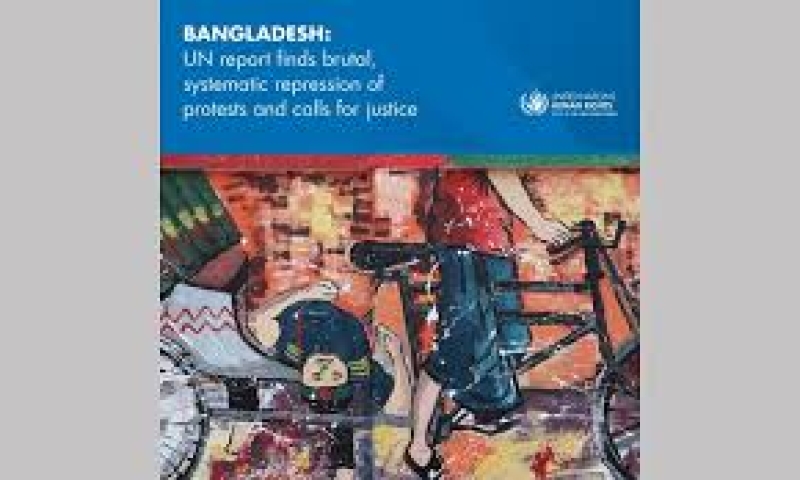- CA Yunus pays homage to Liberation War martyrs on Victory Day |
- Bangladesh capital market extends losing streak for second day |
- Bangladesh celebrates Victory Day Tuesday |
- 'Different govts presented history based on their own ideologies': JU VC |
AL leaders incited violence to suppress protesters: UN report

The United Nations Office of the High Commissioner for Human Rights (OHCHR) has accused armed Awami League (AL) leaders of inciting violence to suppress protesters during the July-August 2024 protests in Bangladesh. The report, released last week from Geneva, states that senior AL figures, including now-disbanded Chhatra League (BCL) members, incited their armed supporters to use violence against demonstrators, often in coordination with police forces.
Based on firsthand testimonies from victims and witnesses, as well as analysis of images and videos, the report asserts that AL supporters, including police, worked together to suppress the protests that erupted from July 14 to 17, 2024, primarily around university campuses.
The OHCHR report claims that during the protests, BCL activists and other AL supporters used blunt and sharp weapons, and at times firearms, to attack male and female student protesters. These attacks, according to the UN report, were incited by senior AL leaders.
Eyewitnesses revealed that, on the night of July 14-15, AL supporters, some armed with weapons, were transported to Dhaka University to intimidate the campus. At around 3:00 AM, Chhatra League President Saddam Hussain addressed the group, telling them that “from Monday [15 July], there will be no razakar on the streets of Bangladesh,” which the report viewed as a directive to district and city leaders to crack down on protesters.
On July 15, AL General Secretary and Minister Obaidul Quader further inflamed the situation by calling protesters “arrogant” and saying that the AL was “ready to take action.” Quader’s remarks were followed by those from other government ministers, branding the student protesters as “traitors” and “razakars,” which, the report notes, was a term used by Prime Minister Sheikh Hasina to discredit the protest movement.
The UN report highlighted that Awami League leaders played a crucial role in organizing violence, with some interviewees acknowledging the party’s control over when and where armed supporters would be deployed. The report details a series of coordinated attacks on student protesters after AL officials made inflammatory statements, with BCL members wearing helmets, carrying weapons, and using organized violence to suppress protests.
One example cited in the report occurred on July 15, when hundreds of BCL supporters stormed Dhaka Medical College Hospital, attacking injured students and medical personnel. Several students sustained further injuries, including fractures and head wounds. Female students were subjected to verbal and physical abuse, and some were even threatened with sexual violence.
While the report notes that some student protesters retaliated with violence, it underscores that BCL members did not act spontaneously but arrived at protest sites armed and prepared to escalate the conflict. The OHCHR also found that, as the protests continued, police forces began integrating AL supporters, including Jubo League members, into their efforts to suppress the protests. In some cases, AL supporters were seen alongside police or sheltered behind them during violent dispersal operations.
The report concludes by attributing the escalation of violence to the politicization of Bangladesh's police force, which facilitated the cooperation between AL, BCL, and law enforcement. It underscores the significant role of AL leaders in inciting and enabling violence against protesters while claiming impunity.

